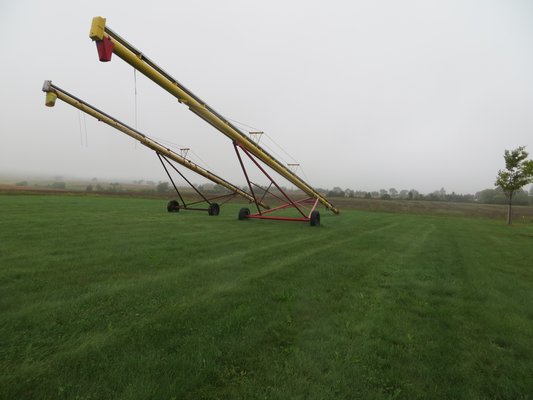
Farmland preservation advocates were dealt a decisive blow this week when a crucial state bill—sponsored by Senator Kenneth LaValle and Assemblyman Fred Thiele—failed to pass the Assembly.
The bill aimed to resuscitate Suffolk County’s purchase of development rights, or PDR, program. For nearly 40 years, the pioneering program has preserved more than 10,000 acres of land, but its efficacy was called into question last fall when a court ruling ified recent amendments that expanded the definition of agriculture, in response to a lawsuit brought against the county and farm advocacy groups by the Long Island Pine Barrens Society.
Farmers with land in the county’s PDR program have been unable to construct barns, greenhouses, fences or even irrigation wells since the ruling in October. Although the county is in the process of appealing the court’s decision, in the meantime, growers are stuck in the crosshairs as the summer season ticks on ahead.
“Until this lawsuit, we had every expectation that we were allowed to do such things as installing deer fences, putting [up] agricultural buildings which were solely to be used for farming. Those are now seen as prohibited,” said Charles Massoud, the owner and operator of Paumanok Vineyard in Aquebogue. He bought the property in 1983. At the time, the development rights had been sold on 110 acres of the land.
Mr. Massoud applied this fall for deer fencing on 25 acres of his vineyard and was told that “the county could not respond to the request,” as the implications of the original lawsuit are still being sorted out in the appeals court.
Pointing out that young vines are especially tasty to animals, he asked, “How are you going to farm if you are not going to protect yourself from the deer?”
So far, six other farmers with land in the county’s PDR program have been told that Suffolk cannot respond to their request, according to the Long Island Farm Bureau. Although the majority are located on the North Fork or in Riverhead, some South Fork farmers have sold their development rights to the county as well.
“The goal of the [PDR program] when it was originally filed was to protect farming, to ensure that farmers had a route to follow in continuing to farm but also to be able to have some sort of financial dividend,” said Mr. LaValle, who in addition to sponsoring the recent bill, voted for the original program in the 1970s. “Farming is different today than it was in 1979.”
Legislators and industry advocates were hoping that the state bill could provide affected growers the ability to conduct standard farming practices, like digging irrigation wells or constructing barns, while the courts sorted through the appeals process. But the appeal itself is what prevented the bill from passing this month, as the Assembly has an informal policy that it does not pass legislation concerning an issue that is being adjudicated.
Describing it as “extremely close,” John v.H. Halsey, the president of the Peconic Land Trust, admitted that the proposed bill was “hung up by this policy.”
He went on to say, “The problem is the time. This is what is wholly unfair. Because of the uncertainty that is imposing on the farming community. These folks have had rights for 40 years to have structures. They are rights that are articulated in their contract.”
As it stands now, the earliest that the courts would reach a decision would be by the end of summer in 2018; the latest would be in the summer in 2019.
For the growers stuck in the crosshairs, boardroom decisions and litigation offer no quick solutions. An estimated 10,636 acres are in the county’s program, leaving many in the lurch. Advocates worry that the problem will grow worse, as the bill was seen as the only band-aid available, while the appeals process continues.
“If you want to have food, you have to have farming. If you want to have farming, you have to have deer fencing, irrigation, barns,” said Mr. Halsey, who worries about the future of the program now that such uncertainty has been created. “It is fundamentally flawed to define agriculture as the literal growing of crops and not what a farmer needs to actually farm.”
Mr. Thiele said he worries about “the chilling effect this will have on further preservation. What farmer in their right mind will sell development rights to the county without knowing what they can and cannot do?”
There are more than 15,000 acres of unprotected farmland across Suffolk County, according to the Long Island Farm Bureau.
Mr. Massoud asked, “As Suffolk County residents, do we really want to make it more difficult for farmers to stay? Or do we want to retain more open space?”